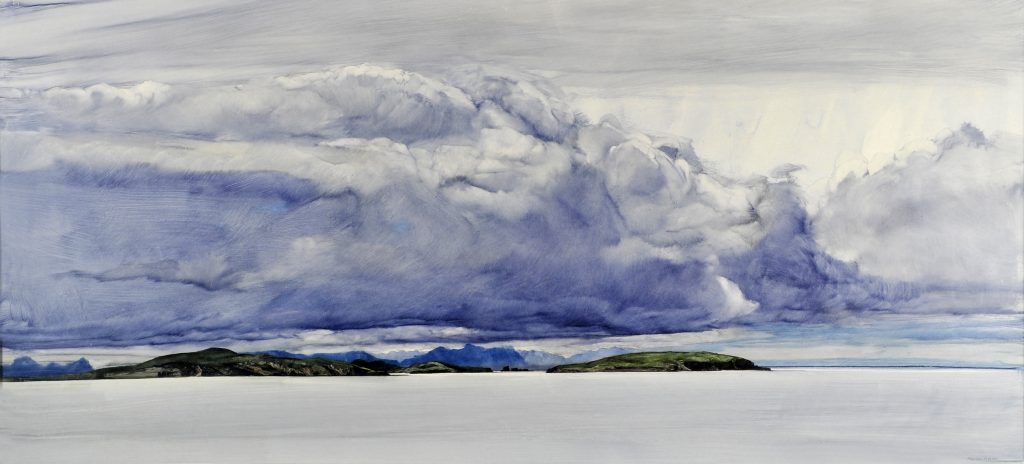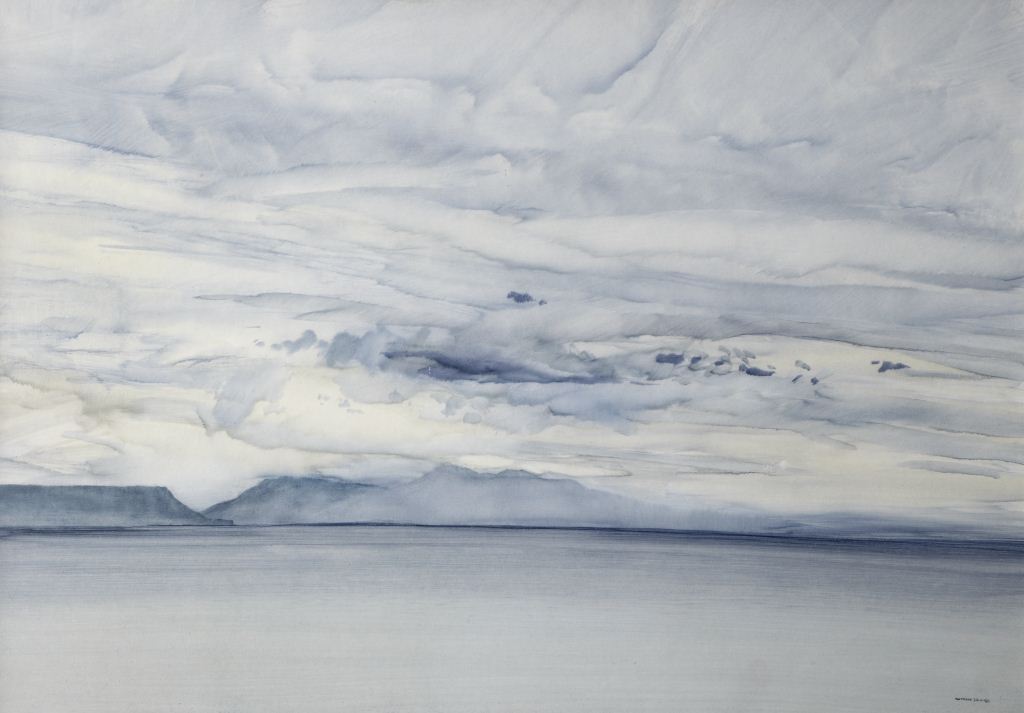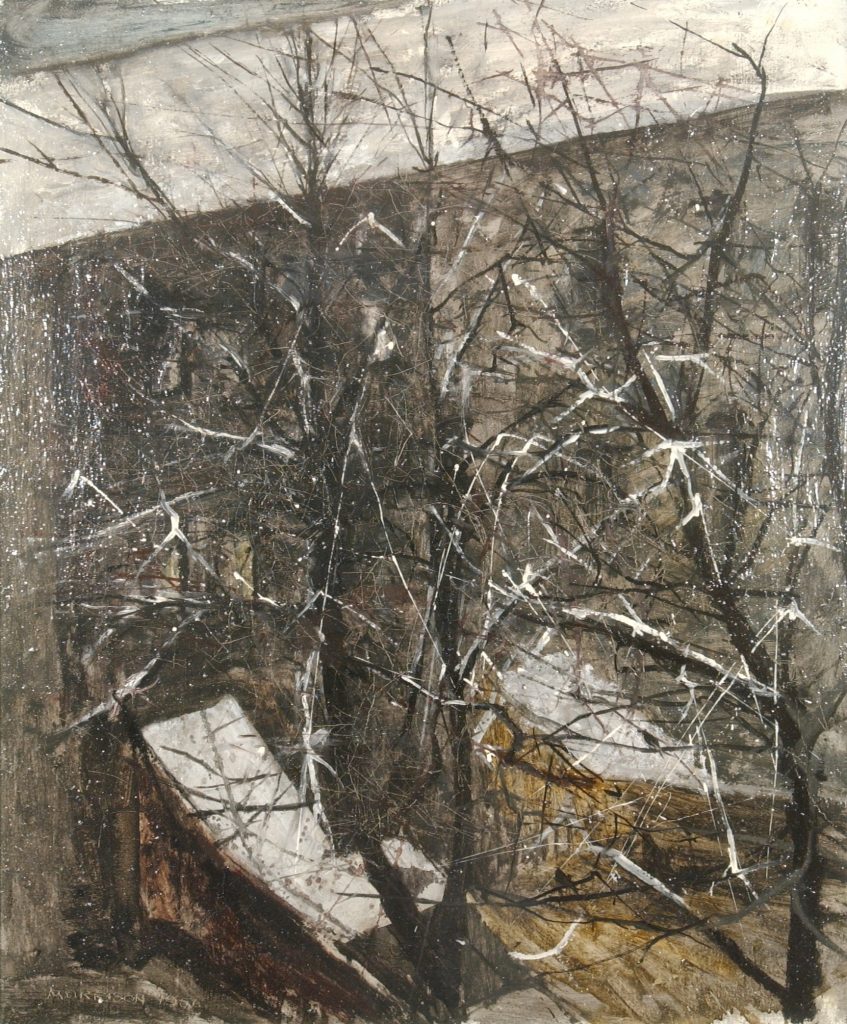While the Pathfoot Building is closed, the Art Collection will each week focus on some objects of interest. You can also search our entire collection online here.

Farnell
James Morrison RSA RSW
(Oil, 1972)
The first curator of the Art Collection, Matilda Mitchell, tells the story that in May 1973, Tom Cottrell, first Principal of the University of Stirling,
‘came back from a visit to the RSA [Open Exhibition], all excited about this picture and died a week later so we just went and got it.’*
It was the first of four by this artist to be acquired by the Art Collection.
James Morrison‘s main working areas are the lush farmland around his home in Angus (as above) and the rugged wildness of the west coast (below). His restrained palette and distinctive huge skies, usually filled with majestically shaped broad brush clouds, convey the wide spaciousness of the Scottish landscape in a particularly unmistakable style.

This painting, entitled ‘An Teallach between Ristol and Mullagragh’ (Oil on board, 1997), was donated to the Collection by the artist to mark the reconvening of the Parliament of Scotland in May 1999. An Teallach is the name of a Scottish mountain. It comes from the Gaelic “the forge”, thought to refer to the colour of the mountain, which is mainly Torridonian sandstone. Watch a short film about Morrison in the Art Collection (made as part of ‘Corridor of Dreams‘ in 2013) here.

‘Rhum and Eigg’ (Oil on board, 1983) was also generously donated to the Art Collection by the artist, and according to the date accompanying the signature – 24/vi/83 – was painted thirty seven years ago this week. It evokes very clearly the mood of a quiet, mild, cloudy June day on Scotland’s west coast.

The fourth work by James Morrison in the Collection is actually his earliest, painted not long after he finished his studies at Glasgow School of Art (1950-54) and when he was still resident in that city. ‘Winter Trees, Glasgow’ (Oil on canvas, 1956) is quite different from the three shown above. Morrison did not move over to the East coast until the 1960s, and this early work has the feel of the city with its geometric trees, undergrowth, and the suggestion of a built environment, with only a sliver of pale sky. The work came to the Collection in 1998 by way of the Scottish Arts Council bequest.
* This story was retold in the Times Ed Supplement ‘ Scottish Diary’ Friday 21st June 1974.